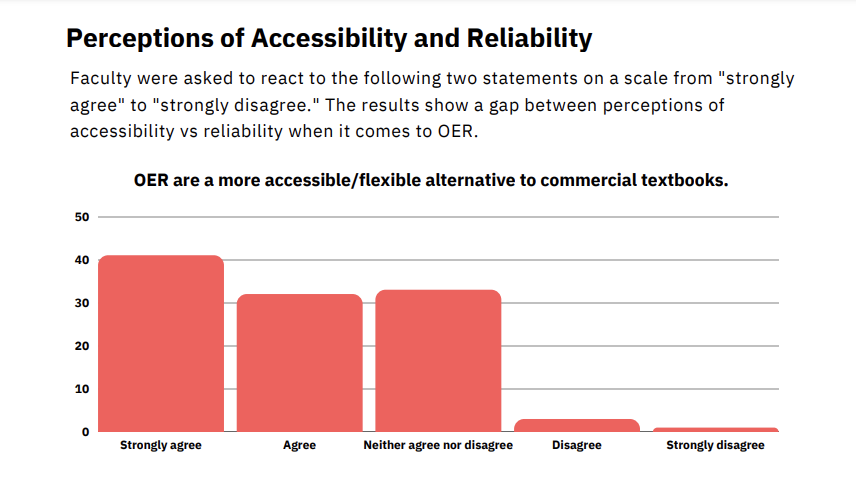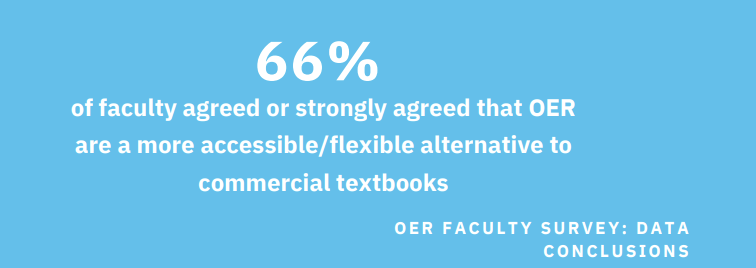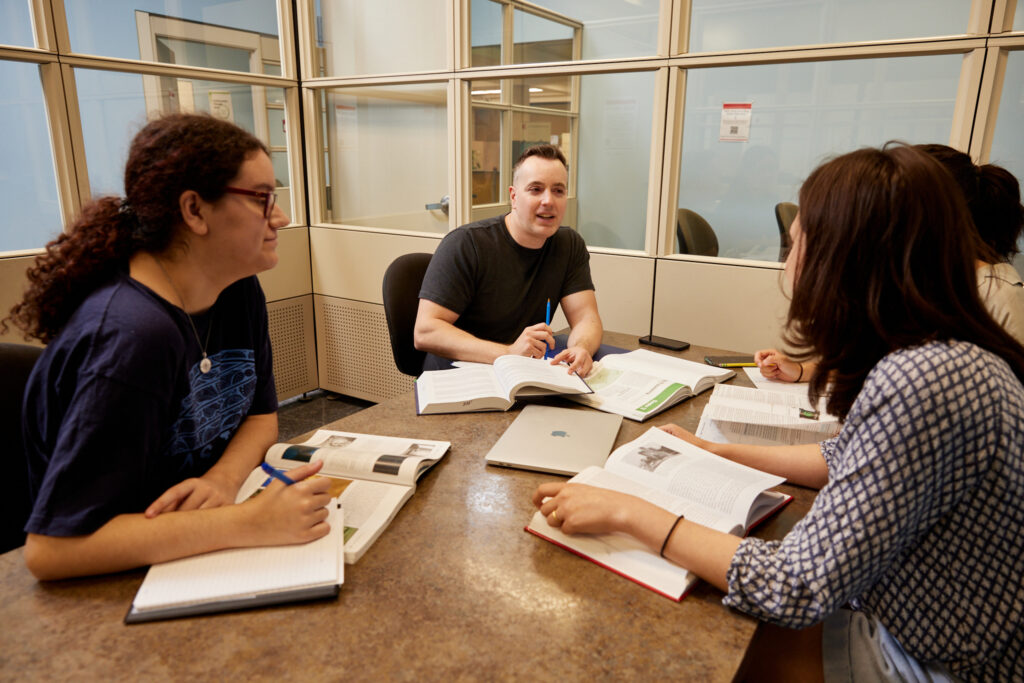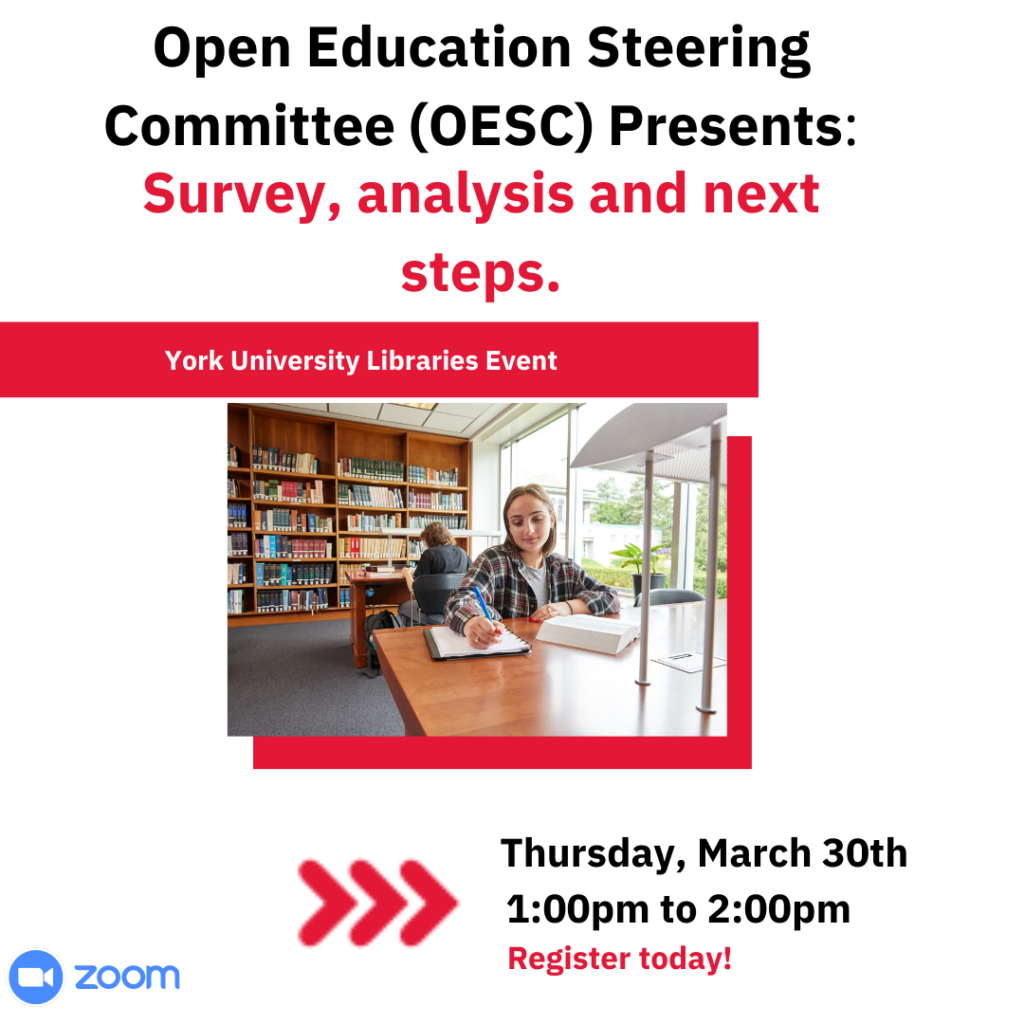According to a recent faculty survey which looked at the use of open educational resources (OER) at York University, the majority of faculty respondents are highly engaged with OER. Open educational resources are free to use and openly licensed teaching and learning materials. These can include textbooks, course reading lists, assignments, case studies, lectures and other forms of learning materials that have been produced by experts and educators in the field. Educational resources can also include scholarly outputs that are in the public domain and therefore also free to use as part of a course.
The objective of the survey, developed and analyzed by working groups of the Open Education Steering Committee (OESC), (OESC's Communications, Guidelines and Policy Working Group), was to inform the OESC's development of programs and resources to support faculty with OER implementation. This would support reducing financial barriers for students, while improving the overall academic experience.
It was also designed to inform pathways to advance innovative open education supports and teaching practices, including an inventory of campus activities in this space as well as professional development opportunities.
Results from the survey showed that 68 per cent of respondents (from a total of 121 respondents) reported using OER in their classes and faculty were much more likely to select Google and YouTube as paths to find OER. Despite the high adoption numbers among respondents, there was a lack of awareness around best practices for searching for and finding OER. Nearly all respondents indicated they would find OER through Google and YouTube searches, despite the existence of curated OER repositories like eCampus Ontario’s Open Library, and OER Commons.
“The findings are very instructive. It confirmed what we instinctually already knew: that our instructors are creating open educational resources but are not categorizing these resources as OER. The survey will help us direct the next phase of the OESC’s work to targeted areas of OER education and awareness building, including award and recognition structures at York.”
— Joy Kirchner, Dean of Libraries, York University and co-chair of the Open Education Steering Committee (OESC)
Will Gage, Associate Vice-President, Teaching and Learning and co-chair of the OESC, remarked that the survey respondents recognize the financial burden textbook purchasing has on students and they see OERs as an accessible and flexible alternative.
“OER offer York instructors an avenue to make learning more affordable for students, helping to remove some barriers to access to education. At the same time the flexibility of OER allows for customization so that instructors can ensure that course materials meet the varied and evolving needs of all of our students. Our next steps will be to work on developing pathways for faculty to find, use, licence openly, and share OER that they have created or adapted.”
Awareness about OER among faculty
“There is a lack of faculty awareness that they are actually creating and using OER in their teaching,” said Mojgan Jadidi, associate professor, Department of Earth & Space Science & Engineering, Lassonde School of Engineering and OER committee member. “With a closer look, we noted that Faculty may not realize that they do not need to use an OER to create OER. For some of our instructors, it may be helpful for them to note that the creation of repositories and pathfinders documenting OER and licensing these under a Creative Commons license are also OER in their own right and should be recognized.”
The OESC feels that this finding shows that more needs to be done to provide faculty with ways to find OER. The team has identified a series of strategies such as developing a York open education common language document, promoting usage and creation of OER by running an OER mini course for faculty and exploring how OER usage and creation can be recognized in the tenure and promotion process.
OER Creation and the UN SDGs
The survey results showed a clear correlation between OER and the United Nations Sustainable Development Goals (UN SDGs) where approximately 30 per cent of respondents were creating OER aligned with SDGs.
“Our hypothesis was that very few faculty would go beyond SDG #4, Quality Education, but we were pleasantly surprised that instructors were already seeing the connection between OER and many of the other SDGs,” said Jadidi. “We observed that those who are heavily involved in OER see the connection across multiple SDGs. Also, we noted that faculty responded very positively to the affordability, accessibility, and flexibility of OER when compared to commercial textbooks. However, there was some concern about reliability and lack of peer review.”
Around 62% of respondents agreed or strongly agreed that there is interest at York in contributing to the United Nations Educational, Scientific and Cultural Organization (UNESCO) OER Mandate. In contrast, only 19.7 % agreed or strongly agreed that they had created an OER that aligned with a UN SDG. Tenured and tenure-track faculty were much more likely to indicate that they had created an SDG-aligned OER.
—OER YorkU Faculty Survey
The findings showed 75 per cent of respondents were familiar with Creative Commons licenses (CC) but only 40 per cent applied CC licensing to their own work due to lack of time and familiarity with the process.
OER and Evidence of Teaching Contribution
55 per cent of survey respondents were unsure if OER were recognized in the tenure and promotion policies of their department or faculty, but 15 per cent said OER could count toward “evidence of teaching contribution.” "Recognition as teaching contribution towards T&P" was also the most commonly selected incentive to use OER, followed by "Access to expert staff" and "Grant funding."
“This finding calls into question the utility of putting the time needed to adapt or create these resources. Devising clear policy around recognition is an important next step that would likely further encourage more people to explore OER in their teaching,” said Martin.
Importance of Findings and Next Steps
The survey provided a better sense of the baseline familiarity and adoption of OER at York and helped to identify that awareness needs to be increased of how OER can be useful for instructors and provide positive benefits for students.
“Costs of commercial textbooks and educational resources are not going to decrease any time soon, and OER offer an opportunity to reduce the financial burden that many of our students face. They can also make course development easier for new (or not so new) instructors, by offering a range of already tested out approaches that could be adapted for use in courses across the university. Overall, we know more than we did before – and most importantly we know what a few of our next steps can be,” said Martin.
Following the results of the survey, the York Open Education Steering Committee will now focus their efforts on examining existing campus awards across York’s faculties to determine if OER questions could be added where applicable. This would also include adding questions which ask faculty to reflect on how their work advances the UN SDGs potentially through Open Education. The Committee will also engage in a university-wide consultation process to learn more about opportunities and barriers.
“We believe creating opportunities for faculty to showcase their advancement of OE and SDGs in our funding and awards structure in the university allows a pathway for recognizing OE and SDGs indirectly in tenure and promotion files. This can hopefully lead to greater recognition of advancing OE amongst tenure committees overall, with the potential of more formalized integration into the teaching process more broadly across campus,” said Jadidi.
For the full report click here.
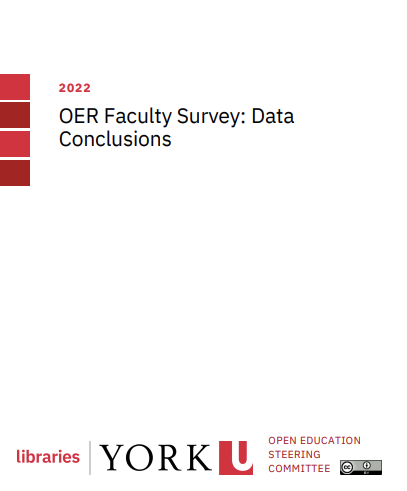
Please join members of the Open Education Steering Committee (OESC) on Thursday, March 30th from 1:00pm to 2:00pm for a virtual event about the survey, analysis and next steps.
Event participants will have the opportunity to:
- Hear a presentation from Dr. Karagyozova, Assistant Professor, Department of Economics, on her open textbook project and how she connected open educational resources (OER) to the UN Sustainable Development Goals.
- Learn more about the results from the OESC's 2021 OER Faculty Survey.
- Participate in a guided discussion about the OER Faculty Survey results and discuss next steps for how the OESC can support OER and open education initiatives at York University.
Register now for the Open Chat for Open Education Event!
To find out more about our work or how you can be involved, please contact us: https://oesc.library.yorku.ca/contact/
or visit: https://oesc.library.yorku.ca/



